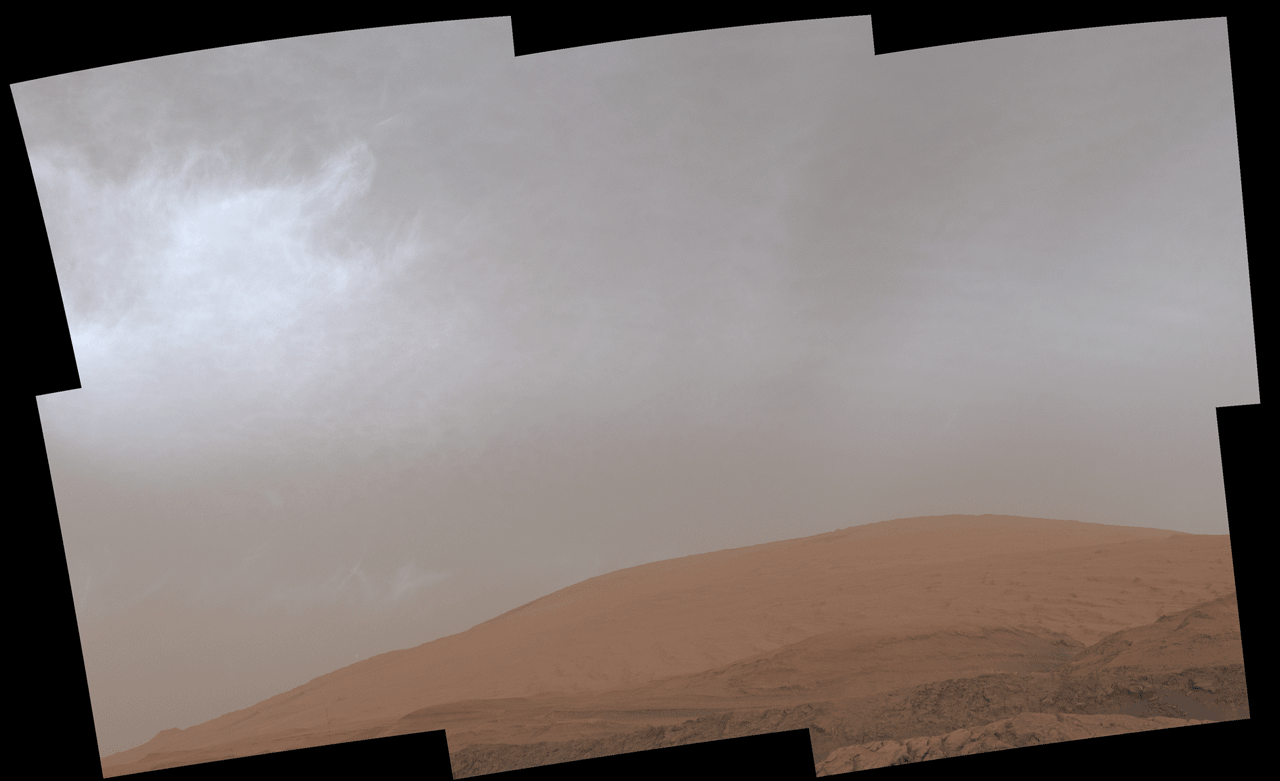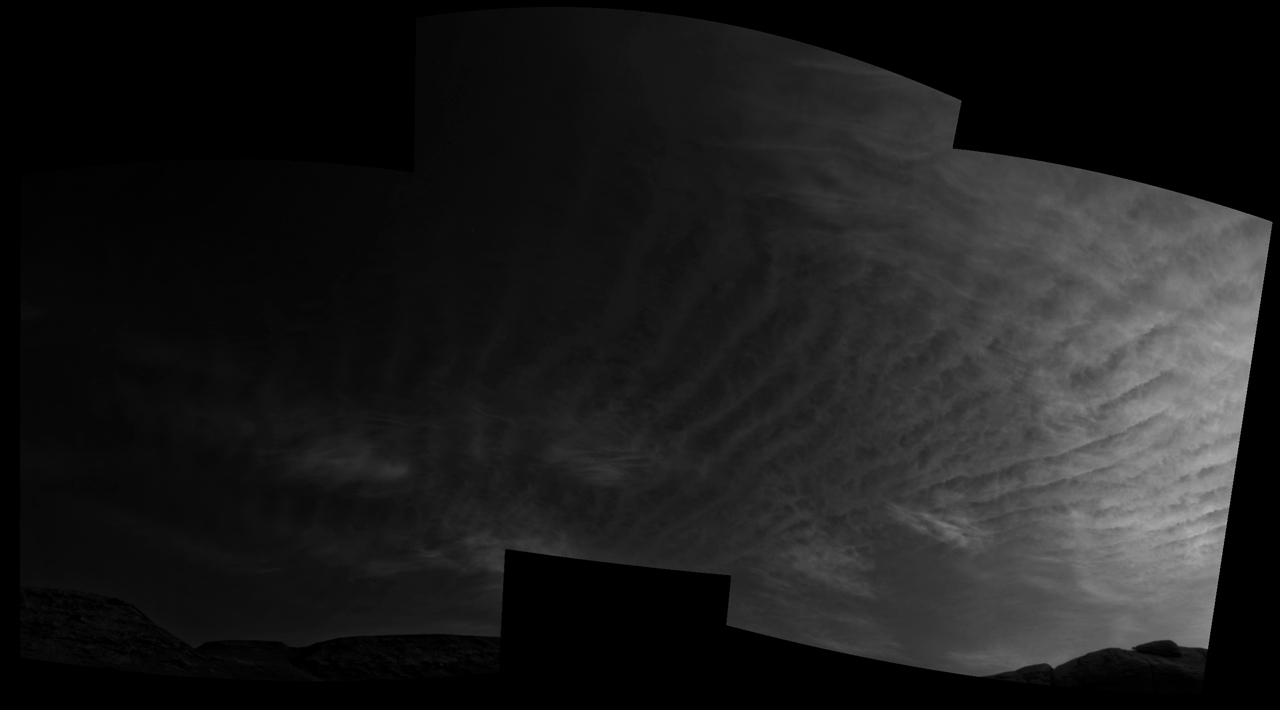The thin atmosphere of Mars makes the appearance of clouds a rare sight, though they can form around the planet’s equator in the coldest time of the year. Last year, NASA noticed that some clouds were forming earlier than expected, and were ready this year to document them when they formed again.
In early January, NASA captured several photos of these “early” cloud formations from the Curiosity rover. The resulting images showed images of what the space organization describes as “wispy puffs filled with ice crystals that scattered light from the setting Sun, some of them shimmering with color.”
They are not only a specular display that’s pretty to behold, but also allow NASA scientists to understand how clouds form on the Red Planet and why these “early” clouds are different from the ones that form during the depths of the Mars winter.

Thanks to the images, the scientists were able to ascertain that the clouds formed at higher altitudes than is typical, a new discovery. NASA reports that most Martian clouds hover no more than about 37 miles in the sky and are composed of water and ice.
But these clouds are different.
“The clouds Curiosity has imaged are at a higher altitude, where it’s very cold, indicating that they are likely made of frozen carbon dioxide, or dry ice,” NASA writes.
It will take scientists more time to determine for sure which of the Curiosity rover’s recent photos show water-ice clouds and which show dry-ice ones, but the images taken from the rover’s Mastcam literally shine when hit with the Sun’s light.

“Viewed just after sunset, their ice crystals catch the fading light, causing them to appear to glow against the darkening sky. These twilight clouds, also known as ‘noctilucent’ (Latin for “night-shining”) clouds, grow brighter as they fill with crystals, then darken after the Sun’s position in the sky drops below their altitude. This is just one useful clue scientists use to determine how high they are,” NASA explains.
In the gifs below, the fine, rippling structure of the clouds is easiest to see with Curiosity’s black and white navigation cameras.


The most iridescent of these clouds are known as “mother of pearl clouds.”
“If you see a cloud with a shimmery pastel set of colors in it, that’s because the cloud particles are all nearly identical in size,” said Mark Lemmon, an atmospheric scientist with the Space Science Institute in Boulder, Colorado. “That’s usually happening just after the clouds have formed and have all grown at the same rate.”

These clouds are one of the most colorful natural phenomena’s on a planet that is pretty much just shades of red and brown. However, if you were on the surface looking up at the sky, the colors would be much fainter.
“I always marvel at the colors that show up: reds and greens and blues and purples,” Lemmon said. “It’s really cool to see something shining with lots of color on Mars.”
Header Image: NASA/JPL-Caltech/MSSS
Author: Jaron Schneider
Source: Petapixel



